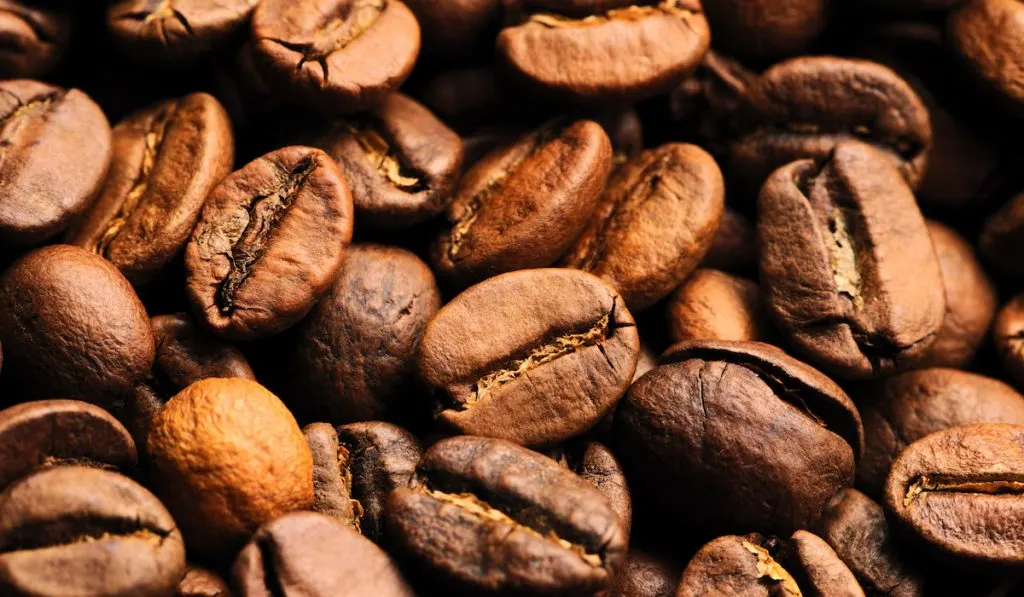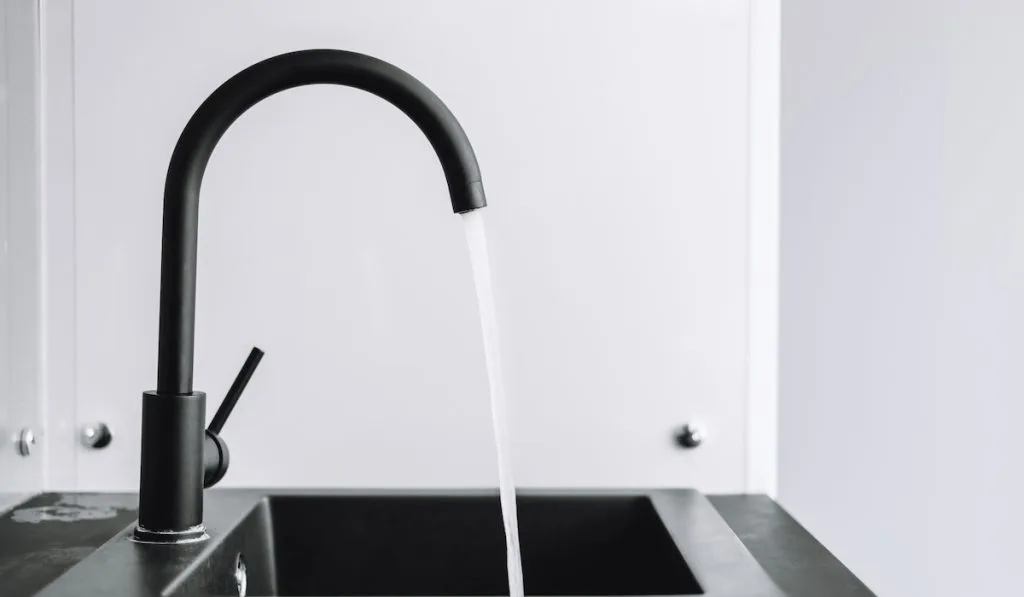Coffee beans are nutrient-rich, and it is normal for mold to grow on them. When inappropriately stored, a combination of warmth and moisture will cause mold to form at a faster rate. Mold might also grow on your coffee beans if you’ve had them for a long time.
Unroasted coffee beans often have a white fur coating giving them a musty flavor when ground. However, some kinds of mold may be unnoticed, while others can even add flavor to coffee beans.
When dealing with coffee bean molds, it isn’t the mold itself that is harmful, but the mycotoxins produced by the mold spores. These mycotoxins are the primary cause of several health problems in the human body if consumed or inhaled. Examples of mycotoxins known to be on coffee beans include;
- Ochratoxin A – Linked to depletion of dopamine, in turn leading to depression and chronic fatigue. Furthermore, it damages brain cells and is not good for your kidneys.
- Fumonisin B1 – Associated with damage of brain cells and general neurodegeneration.
- Aflatoxin B1 – Known to increase the risk of liver cancer.
- Macrocyclic Trichothecenes – This leads to general neurodegeneration and olfactory problems.
The above toxins are known to slowly attack the human body and cause extensive damage through the illnesses. As they say, better prevention than cure, why don’t you get to the root of the problem? Why not wash the coffee beans to get rid of the mold?
Before we get to washing off the mold, how do you know your coffee beans are moldy?

How Do You Know Your Coffee Beans Are Moldy?
The most common sign of moldy coffee beans is the white fur coating on the beans or grounds visible on them when you open up a container. However, not all molds are visible to the naked eye, and most studies show that most coffee beans already have low levels of mold, even those deemed to be fresh.
In case you haven’t seen the coffee beans to recognize if they were moldy, the taste should automatically tell you something is off.
If your coffee tastes funny, smells bad, or has an unusual texture, it is best to discard the coffee to be safe. All foods get unusual tastes whenever molds take over. The taste should therefore warn you off molded coffee.

Can You Wash Mold Off Coffee Beans?
Yes, you can wash off mold on coffee beans using cold water. However, the best and safest way to mold off coffee beans is to discard any batch of beans that are affected by mold and acquire fresh coffee beans.
Either way, if you still want to use the molded coffee beans, how do you get rid of the mold?
- First, you should wash the coffee beans with cold water to remove any un-germinated mold spores on the coffee bean surface, then scrape the sticky mold off the bean surface using a blunt knife.
- Using an air-tight container filled with 2 parts water and 1 part vinegar, place the coffee seeds in the container and secure it with the lid, making sure that the container is tightly sealed.
- Let the coffee beans soak in there for about 30 minutes then remove and rinse them with cold water.
- If there are any beans still affected by mold after this process, collect and throw them away, and brew the remaining coffee beans.
Although it doesn’t affect the taste of your coffee beans, using water and vinegar to wash them is not the most effective method. Once again, it is best to discard the affected package and buy fresh coffee beans.

What Next After Drinking Moldy Coffee?
Did you accidentally drink moldy coffee? You have nothing to worry about. It is common to consume molds in common foods and drinks. Besides, some forms of mold are harmless, and humans have acidic stomachs that can handle mycotoxins in low doses.
However, mycotoxins can be harmful if consumed in large quantities, say through frequent consumption of heavily contaminated coffee beans. Side effects could include nausea, possible diarrhea, and a little stomach upset. Otherwise, you won’t feel anything from just a few sips.
If you feel sickly or the side effects are too weighty on you after consuming moldy coffee, you should immediately seek medical attention.
However, if your liver and kidneys are functioning at their best, excretion of small traces of mycotoxins in the bloodstream shouldn’t be a problem.

How to Reduce Risks of Mold on Coffee Beans
To avoid and reduce the risk of mold on coffee beans, there are a few things to look out for when purchasing coffee beans to be certain they have low levels of mycotoxins, as well as a few things you can do to prevent moldy coffee beans.
- Use single-estate coffee – Using coffee beans from one specific supplier or farmer is the best way to avoid moldy coffee. Major coffee brands, for example, are fond of blending varieties of coffee from different growers, which can only increase the chances of cross-contamination making the mold spread faster, even to the fresh coffee beans. Generally, coffee blends are more prone to molds.
- Look for wet-processed beans – Washed coffee beans, as they are also known, are better off than naturally processed coffee. For the wet-processed coffee beans, the fruit covering of the coffee beans is removed before they get dry, a method effective in improving the consistency and cleanliness of the coffee bean.
- Only brew coffee made from beans grown at high altitudes – Higher altitudes are known for drier climates, and drier climates are less prone to mold compared to areas with higher humidity. Coffees grown in higher altitudes are therefore less likely to be infested with mold spores during both fermentation and packaging. Remember, always look for the words “High Altitude” indicated somewhere on the package when buying packaged coffee products.
- Appropriate Coffee Bean Storage – Always keep the coffee beans in air-tight containers away from direct sunlight in a cool and dry place. Storing coffee beans in airtight containers not only stops mold spores from developing but also slows down the staling process, better preserving your coffee beans.
- Roasting the coffee beans – Roasting coffee beans is effective in killing molds, and subsequently reducing Orchatoxin A levels by over 65%.
- On the contrary, if you realize you have been consuming molded coffee for a long time, and you’re experiencing serious symptoms, you can decide to give up on coffee for a while or completely. This might not be a reasonable solution for most, but it would help to regain lost health.
Whether organic or conventional coffee, no matter the type, any coffee can grow mold. It is therefore good to look for the best brands that are not prone to mold or have low levels of mold.
Conclusion
Washing your coffee beans effectively washes mold off your coffee beans. Mycotoxins are not only found in moldy coffee beans, but also in almost any moldy food. As long as the levels are low, mycotoxins shouldn’t be a major concern.
Thin mold covers are fine to wash off but if your coffee beans have thick mold spore covers, it is best to just throw them away and purchase a fresh package of coffee beans.
Ensure to adhere to good storage and handling practices on this new package or you will find yourself in the same situation after a while.
Resources
- https://oureverydaylife.com/how-to-remove-mold-from-coffee-beans/
- https://roastingtobrewing.com/how-to-remove-mold-from-coffee-beans/
- https://www.prevention.com/food-nutrition/healthy-eating/moldy-coffee/
- https://www.healthline.com/nutrition/the-mycotoxins-in-coffee-myth#bottom-line
- https://www.simplyandnaturally.com/how-to-reduce-your-risks-of-getting-mold-toxins-in-your-coffee/
- https://realtimelab.com/blog/is-there-mold-in-your-coffee/
